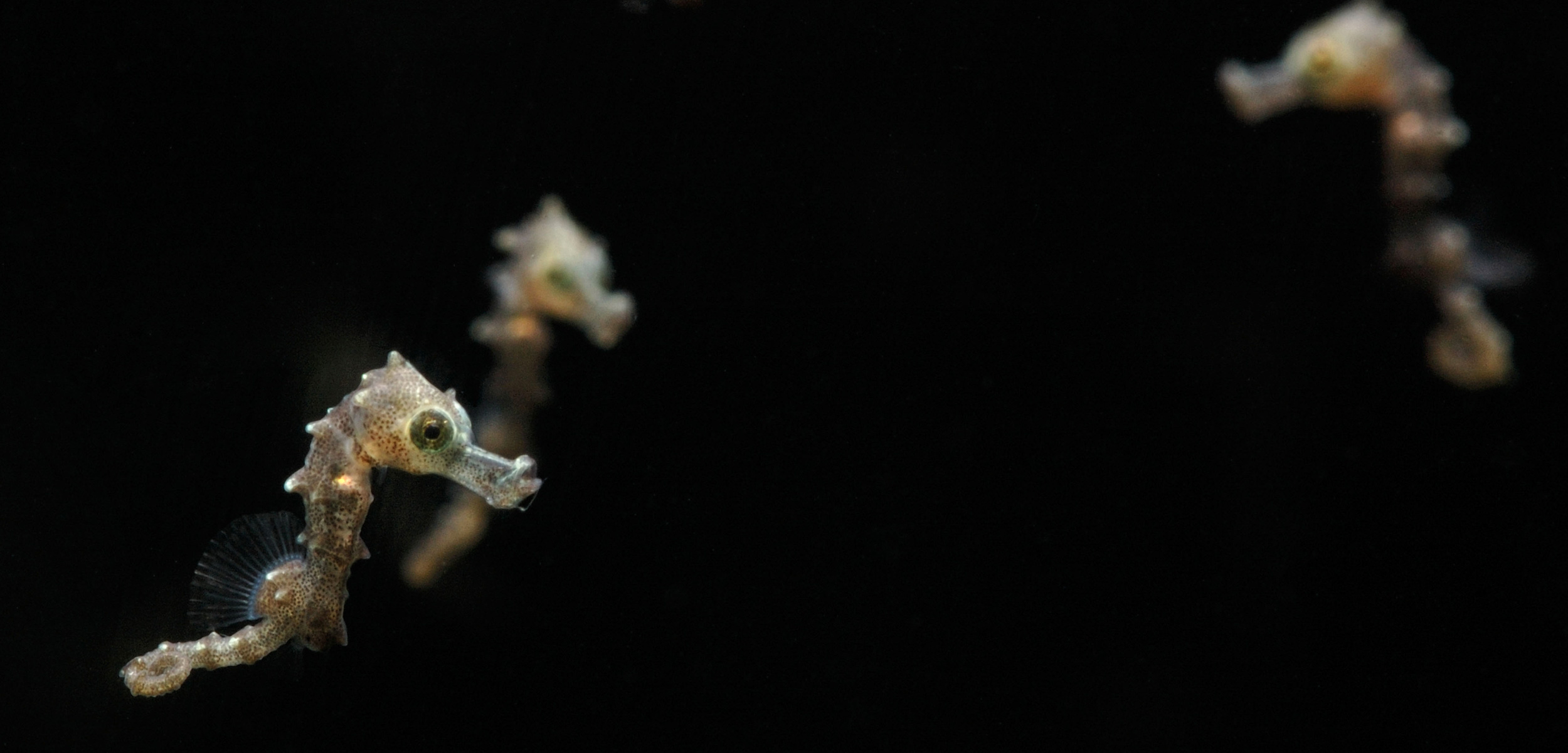Seahorse Dads Have Gotta Feed Those Buns in the Oven
A recent study sheds light on the role male seahorses play in nourishing their babies.
Article body copy
In the animal kingdom, the poster child for male pregnancy is the seahorse.* Yet even though male seahorses carry their young, scientists have largely assumed that the dads don’t have a lot of biological back and forth with their babies, says Alireza Fazeli, a reproductive biologist at the University of Tartu in Estonia and a veterinarian by training. But after studying long-snouted seahorses, he found that these fathers play a critical role in nourishing their babies for survival. Fazeli found that, as in pregnancies where the mother carries the offspring to term, the health of the offspring depends on what the expectant father eats. It also matters when seahorse dads-to-be eat.
As with other seahorses, female long-snouted seahorses transfer their eggs to males, which then fertilize and carry them to term in a pouch. Mom has provided nutrients to her young by way of the yolks in her eggs, while dad’s bloodstream supplies oxygen and additional nutrients.
But how much do those nutrients from dad really matter?
To find out, Fazeli and his colleagues ran an experiment that modified the amount of essential fatty acids each expectant father was receiving in its diet. Fatty acids, such as the omega-3s often touted as brain food, are vital for seahorse embryo development, says Fazeli, as they are for all developing animals.
The researchers fed the dads-to-be a diet deficient in fatty acids at various times: before conception, at the early stages of pregnancy, throughout pregnancy, and at the late stages of pregnancy.
The dads that ate a fatty acid–poor diet before becoming pregnant spawned babies that were smaller than average. Curiously, the babies born to dads that received a fatty acid–deficient diet at a late stage of pregnancy showed a different effect: longer and thinner snouts than normal.
Ingrid Ahnesjö, a biologist at Uppsala University in Sweden who was not involved in the research, says a seahorse’s snout shape matters. Seahorses eat by swimming beneath their prey, aiming their snout at just the right angle, and sucking. “They feed like a pipette,” says Ahnesjö. Wider snouts can engulf bigger prey, while length improves precision. Since the babies fend for themselves as soon as they’re born, the shape of their schnoz is critical for survival.
It’s not exactly clear yet why the timing of fatty acid intake proves so critical to the development of a baby’s snout shape, or to its overall size. Those are questions that Fazeli is exploring now that he’s shown how important dad’s nutrient gift to baby really is.
No word yet on whether seahorse dads also crave pickles when they’re pregnant.
*Correction: The introduction to this story has been updated to more firmly focus the story on seahorses, rather than male pregnancy generally.

